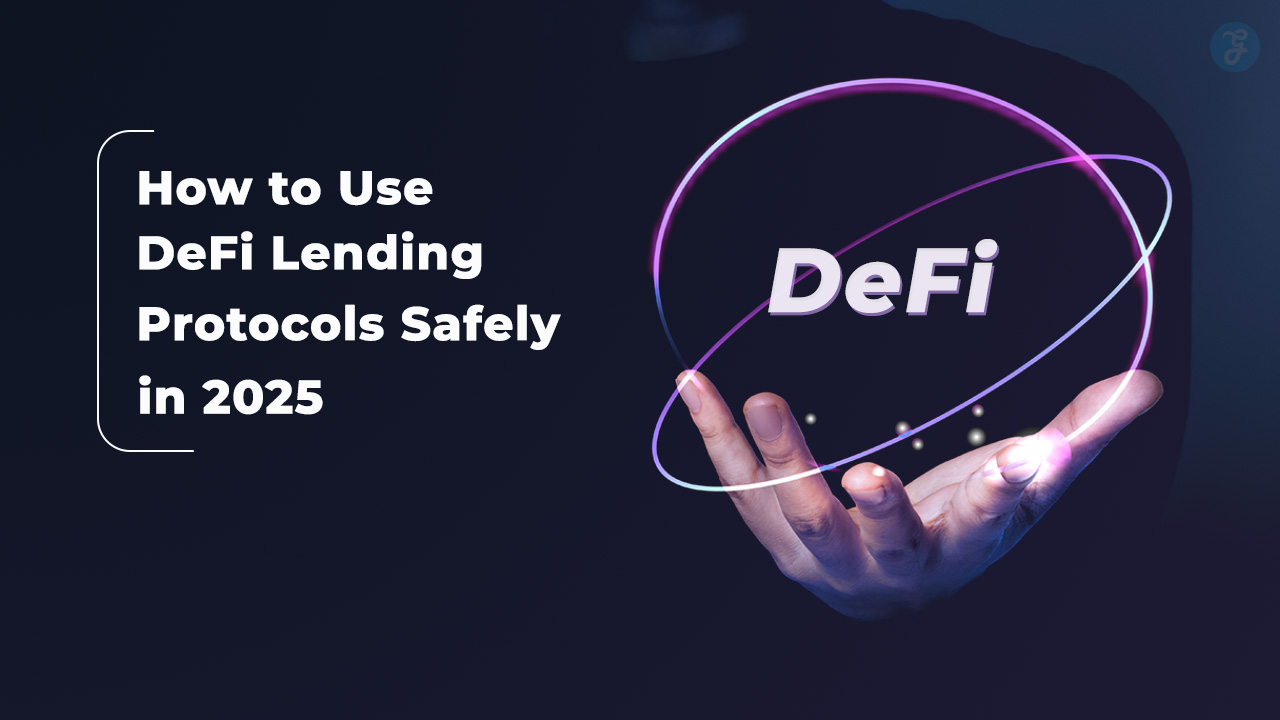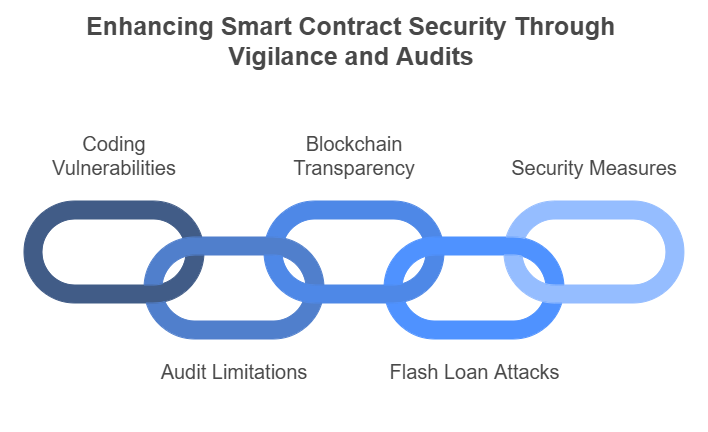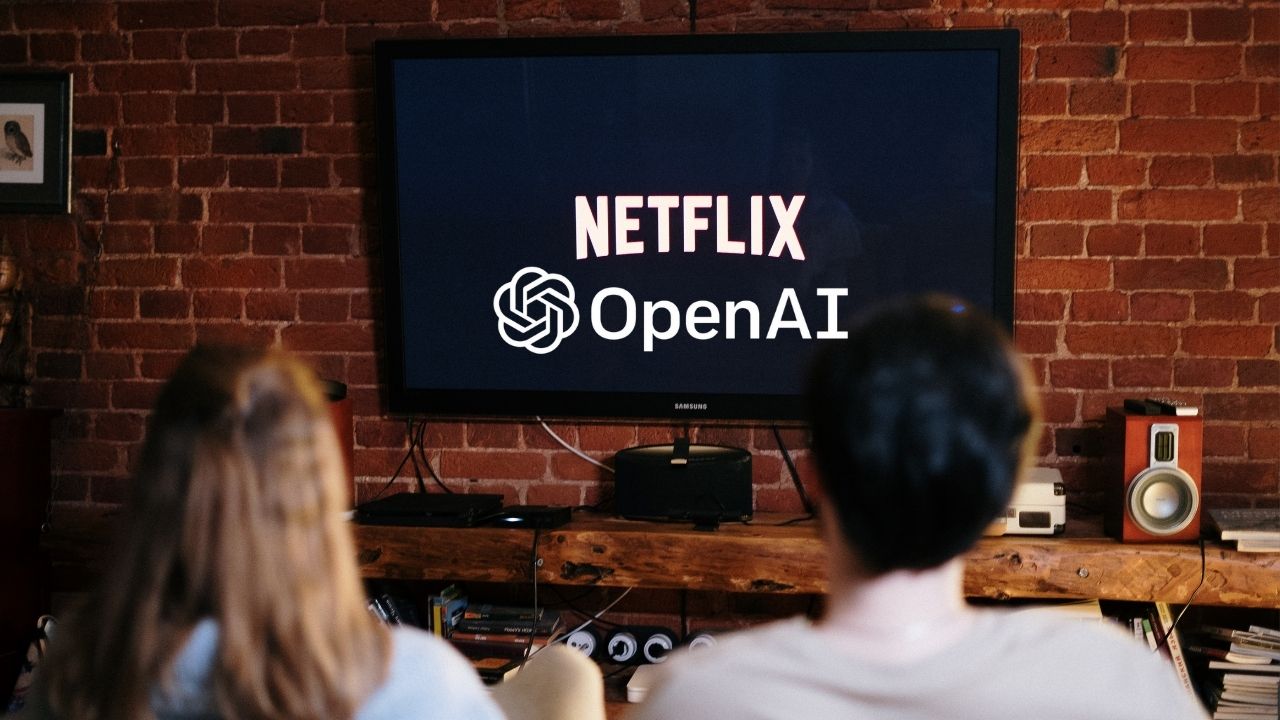DeFi lending protocols have transformed how people borrow and lend money. These tools let users earn interest or access funds without banks or credit checks. Yet, many worry about safety—like losing funds to hacks, market crashes, or bad decisions.
In 2025, DeFi is more advanced but still requires care. Platforms like Aave and MakerDAO offer great opportunities for profit but come with risks if not used wisely. This guide will show you safe ways to use DeFi lending protocols while protecting your digital assets.
Stay safe while growing your crypto wealth! Keep reading to learn more.
Understanding DeFi Lending Protocols
DeFi lending protocols let users borrow or lend digital assets using blockchain. They operate through smart contracts, removing the need for banks or middlemen.
Key Features of DeFi Lending
DeFi lending uses blockchain technology and smart contracts to remove middlemen. Borrowers get loans by providing crypto assets as collateral, managed through automated loan-to-value (LTV) ratios.
Lenders earn passive income with annual percentage yield (APY) by adding funds to liquidity pools.
Platforms like Aave offer flash loans, which don’t need collateral if repaid immediately. Interest rates adjust automatically based on supply and demand in these lending protocols.
Users also benefit from financial inclusion since anyone with a crypto wallet can access services—no credit scores needed.
Comparison: Collateralized vs. Non-Collateralized Loans
Collateralized and non-collateralized loans have distinct features. Borrowers and lenders should understand these differences before using DeFi lending protocols. Below is a comparison of these two loan types:
| Key Features | Collateralized Loans | Non-Collateralized Loans |
|---|---|---|
| Definition | Borrowers provide collateral exceeding the loan value. | No collateral is required, relying on trust or credit scoring. |
| Risk Level | Lower for lenders due to secured collateral. | Higher for lenders; repayment depends on borrower integrity. |
| Interest Rates | Typically lower because of reduced risk. | Higher due to increased lending risks. |
| Examples | Aave, MakerDAO, Compound. | Some credit-based lending protocols, often emerging tech. |
| Liquidation | Failure to repay results in collateral liquidation. | No liquidation process; lenders bear losses if default occurs. |
| Use Case | Popular for borrowing stablecoins like USDC or DAI. | Useful for users with strong on-chain credit histories. |
Collateralized loans dominate the DeFi space due to their security. Non-collateralized options are rare and often experimental. Each type serves different needs depending on borrower profiles and lender risk tolerance.
Risks Associated with DeFi Lending Protocols
DeFi lending can be risky due to issues like unstable markets and flawed code in smart contracts. These risks may cause sudden losses or make it hard to secure your assets.
Smart Contract Vulnerabilities
Smart contracts power decentralized finance (DeFi), but they have risks. Poor coding, bugs, or untested systems can lead to attacks. In 2022 alone, hackers stole over $3 billion from DeFi platforms due to these issues.
Even audited smart contracts are not immune to exploits by malicious actors searching for weaknesses.
Blockchain technology ensures transparency but cannot fix flawed code. Flash loan attacks often exploit vulnerabilities in lending protocols, draining liquidity pools in seconds. To stay safe, choose platforms with regular third-party audits and active security monitoring tools like decryption keys or vulnerability checks.
Market Volatility and Liquidation Risks
Market swings can lower the value of your crypto collateral fast. If the collateral falls under the set threshold, automated liquidation kicks in. Borrowers lose their assets to protect lenders from defaults on decentralized finance (DeFi) platforms.
High volatility in cryptocurrencies like Bitcoin or Ethereum makes this risk worse. For example, a 20% price drop could trigger immediate liquidation if not enough extra collateral is deposited quickly.
Monitoring market sentiment and keeping a buffer of stable coins in your account can help reduce this danger.
Platform Security Breaches
Phishing attacks target DeFi users through fake websites mimicking trusted platforms. Scammers trick people into entering private keys or sharing wallet details. Platforms without proper security audits are more vulnerable to breaches and hacks, putting crypto collateral at risk.
Reputable firms conduct audits to test smart contracts for flaws. Missing these checks increases the chances of attackers exploiting bugs in decentralized applications (dapps). Protect your digital assets by avoiding unauthorized lending protocols and double-checking URLs before connecting wallets.
Key Steps to Use DeFi Lending Protocols Safely
Start by choosing secure platforms with strong reputations to manage your funds. Use reliable wallets and tools to protect your crypto assets from potential risks.
Researching Reputable Platforms
Check protocols with strong security audits. Reputable firms like CertiK or OpenZeppelin often audit trusted platforms. Security audits reduce risks tied to smart-contract vulnerabilities and platform breaches.
Review the team behind the protocol. Look for experienced developers in blockchain technology and decentralized applications (dapps). High total value locked (TVL) can also indicate a reliable platform, showing retail investors trust it with their digital assets.
Diversifying Investments Across Protocols
Spreading investments across different lending protocols reduces risks. By distributing funds across multiple platforms, you safeguard your assets from potential smart contract failures or security breaches.
For instance, instead of relying solely on Aave, allocate funds between Compound and MakerDAO as well. This mitigates potential losses if one protocol encounters problems.
Examine each protocol’s reliability before committing your investments. Evaluate their total value locked (TVL), historical occurrences, and community reputation. Opt for platforms with a proven track record of safeguarding liquidity pools and securing digital assets.
Diversification reduces exposure to market fluctuations while enhancing the protection of your crypto collateral.
Monitoring Collateral Ratios Regularly
Borrowers must track their collateral-to-loan ratio often to avoid liquidation. DeFi lending protocols usually require this ratio to stay above a set threshold, like 150% or higher, depending on the platform.
If it falls below that level due to market drops, your assets may be liquidated instantly to cover the loan.
For example, in platforms like Aave or MakerDAO, crypto collateral values can shift with price changes in digital assets such as Ethereum or Bitcoin. To manage risks smartly, adjust your collateral when prices dip sharply.
Using tools built into these decentralized applications (dapps) can help you monitor ratios easily and act fast during volatile markets. Safe management ensures both asset security and peace of mind for retail investors using blockchain technologies for loans.
Using Multi-Signature Wallets for Enhanced Security
Multi-signature wallets boost crypto wallet safety. They need approvals from multiple parties to move funds, lowering risks of private key leaks. This setup stops theft if one key gets exposed or stolen.
For example, a three-key wallet may require two keys to approve transactions, adding an extra layer of security.
These wallets also reduce the chance of unauthorized access. Hackers can’t drain assets by stealing just one admin key. Many decentralized applications (dApps) and lending protocols recommend multi-sig setups for managing large amounts in liquidity pools or collateralized loans.
Best Practices for Risk Mitigation
Protecting your funds should always come first. Use smart strategies to reduce losses while improving long-term stability.
Avoiding Over-Leveraging
Over-leveraging can lead to sudden liquidation of crypto collateral during market volatility. Borrowers should aim for over-collateralization, keeping the collateral value 1.5 to 3 times higher than the loan amount.
This provides a safety net if asset prices drop quickly. Flash loans can help adjust positions by swapping collateral or interest rates fast.
High interest rates and fluctuating markets increase risks for retail investors in decentralized finance (DeFi). Monitor your borrowing limits and avoid taking too many loans at once.
Margin trading with excessive leverage puts digital assets at risk of forced liquidation, wiping out investments completely.
Staying Updated on Protocol Changes
DeFi lending protocols often update rules and features. These changes can affect interest rates, collateral requirements, or smart contracts. Users should check announcements from official platforms like Aave or Compound regularly.
Joining governance forums or subscribing to protocol newsletters helps track updates quickly.
Set alerts for major changes in decentralized applications (dApps). Health factors tied to your crypto collateral may also shift due to new platform policies. Staying informed lowers risks of unexpected liquidation and protects assets in lending pools or liquidity mining setups.
Setting Stop-Loss or Liquidation Alerts
Set alerts to act quickly during sudden price changes of your crypto collateral. Tools like DeFi Saver, DeBank, and Zerion help track lending pools and monitor positions in real time.
These platforms allow users to customize notifications for liquidation risks or changing interest rates.
Liquidation alerts protect assets from market volatility. For example, if the value of a decentralized finance (DeFi) loan drops near its threshold, an alert can prompt you to add more funds or repay part of the borrowed amount.
Acting fast avoids losing collateral in unpredictable markets.
Popular DeFi Lending Platforms in 2025
Many platforms offer lending tools with attractive features and strong track records. Explore options that prioritize security, ease of use, and competitive interest rates.
Aave
Aave, founded by Stani Kulechov in 2017, started as ETHLend and quickly grew into a leading DeFi lending protocol. By mid-2024, its total value locked (TVL) surpassed $11 billion. It allows users to lend or borrow various digital assets while earning interest through ATokens.
The platform operates on public blockchain networks with a strong focus on security and decentralized governance controlled by holders of AAVE tokens.
Its native stablecoin GHO, pegged to the US dollar, offers additional options for liquidity providers and borrowers. Users benefit from features like flash loans, which require no collateral if repaid instantly.
Aave prioritizes transparency and flexibility in decentralized finance (DeFi), making it popular among both retail investors and institutional participants alike.
Compound
Compound operates on the Ethereum blockchain. It allows users to earn passive income by lending digital assets or borrowing against crypto collateral. Interest rates change based on supply and demand within its lending pools, ensuring fair returns for liquidity providers.
Governance tokens called COMP give holders control over protocol decisions. These decisions include updates, changes to interest-rate models, or adding new cryptocurrencies to its platform.
By staking funds in Compound’s decentralized applications (dApps), retail investors can securely grow their holdings without relying on traditional banking systems like bank loans or credit cards.
MakerDAO
MakerDAO operates on blockchain technology to create the stablecoin DAI. This decentralized finance (DeFi) protocol uses smart contracts to allow users to borrow or lend without middlemen.
By locking crypto collateral in lending pools, users mint DAI, which maintains its value against the U.S. dollar.
MKR token holders govern MakerDAO. They vote on decisions like adjusting interest rates and managing total value locked (TVL). The system also includes liquidation mechanisms to handle market volatility risks effectively.
Known for financial inclusion, MakerDAO supports borrowers globally with secured loans backed by digital assets like Ethereum.
Emerging Features in DeFi Lending for 2025
New tools, like AI-driven strategies and risk assessment features, promise to make DeFi lending smarter—keep reading to see what’s next.
Advanced Risk Assessment Tools
DeFi platforms now use advanced tools to assess risks in lending protocols. These tools examine transaction accuracy and ensure real-time responses. They help users spot problems like smart contract vulnerabilities or sudden market drops faster.
Platforms also rely on utility-based evaluations to rank their performance.
AI-powered systems strengthen risk management by analyzing blockchain data quickly. They identify irregularities in liquidity pools or lending pools before issues arise. Using these technologies, lenders can better protect their crypto collateral and maintain safer investments in decentralized finance (DeFi).
AI-Powered Yield Optimization
AI-powered tools now streamline yield generation in decentralized finance (DeFi). The Lazy Summer Protocol, for instance, uses artificial intelligence to boost returns on lending pools.
It analyzes market conditions and reallocates capital automatically for higher earnings. This eliminates manual interventions and saves time.
These advanced systems assess risks while adjusting interest rates or liquidity strategies. They help liquidity providers optimize their passive income with minimal effort. By using AI, platforms ensure smarter collateral management and reduce overhead costs for users.
The Future of Safe DeFi Lending
Safe DeFi lending will rely on stronger security measures, smarter tools, and clear rules to protect users in the future — explore what lies ahead.
Regulatory Trends and Their Impact
New regulations are shaping decentralized finance (DeFi) lending. Governments focus on compliance and risk management to protect retail investors and institutional players. Enhanced guidelines improve transparency in smart contracts, digital assets, and blockchain technology.
These laws attract big firms due to safer investment structures.
Stricter rules reduce counterparty risks tied to lending protocols. Platforms must meet standards for crypto collateral security or face penalties. By 2025, efforts aim at balancing financial inclusion with stable governance tokens.
Regulatory clarity boosts trust in DeFi systems, increasing total value locked (TVL).
Innovations in DeFi Security
Smart contract audits and penetration testing now lead DeFi security advancements. These tools uncover vulnerabilities, ensuring lending protocols are safer for users. AI-powered systems also enhance risk detection by analyzing unusual activity on decentralized applications (dApps).
Such features protect digital assets while boosting confidence in blockchain technology.
Multi-signature wallets bring extra layers of protection to crypto collateral and liquidity pools. With these wallets, multiple approvals are needed to access funds, reducing fraud risks.
Continuous updates in governance tokens and staking models further safeguard decentralized finance platforms by involving auditors in regular checks.
Takeaways
DeFi lending continues to transform finance. It empowers users and removes middlemen.
Dr. Sarah Collins, a blockchain expert with 15 years of experience, shares her insights. She holds a Ph.D. in Blockchain Technology from MIT and has worked on decentralized applications for leading fintech firms.
Her expertise includes DeFi protocol security and financial inclusion research.
Dr. Collins explains that features like collateralized loans and interest yield make DeFi lending effective. These tools allow borrowers to access funds efficiently while letting lenders earn passive income.
She highlights safety as key when using these platforms. Reputable protocols prioritize transparency through open-source smart contracts and audits by third-party firms. Compliance with global standards can further ensure user trust.
For everyday use, Dr. Collins suggests starting small with trusted apps like Aave or MakerDAO while studying platform rules carefully. Users should diversify investments across multiple protocols to spread risk.
On the bright side, she notes higher returns compared to traditional banks due to better rates in many DeFi pools—though risks include liquidation during market dips or technical issues like hacking vulnerabilities associated with some platforms today.
Her verdict? While not without flaws, DeFi offers immense potential for growth if used carefully by informed users who manage risks wisely!
FAQs on How to Use DeFi Lending Protocols Safely
1. What are DeFi lending protocols, and how do they work?
DeFi lending protocols are decentralized applications (dApps) built on blockchain technology that let users borrow or lend digital assets without banks. Borrowers provide crypto collateral, while lenders earn interest from liquidity pools funded by their deposits.
2. How can I use DeFi lending safely in 2025?
To use DeFi lending safely, research the protocol’s smart contracts for security and understand its governance tokens. Always monitor total value locked (TVL) to assess platform reliability and ensure your crypto wallet is secure.
3. What risks should I watch out for when using these platforms?
Key risks include collateral liquidation if asset values drop, flash loan exploits targeting weak smart contracts, and unpredictable interest rates due to market changes in liquidity pools.
4. Can retail investors benefit from DeFi lending protocols?
Yes! Retail investors can access financial inclusion through decentralized finance by earning passive income via yield generation or staking assets in money markets—without needing traditional credit reporting systems.
5. Is it possible to get unsecured loans through DeFi platforms?
Most loans require crypto collateral, but some advanced platforms may offer unsecured loans like flash loans designed for instant repayment within a single transaction—though these carry higher risks.










































